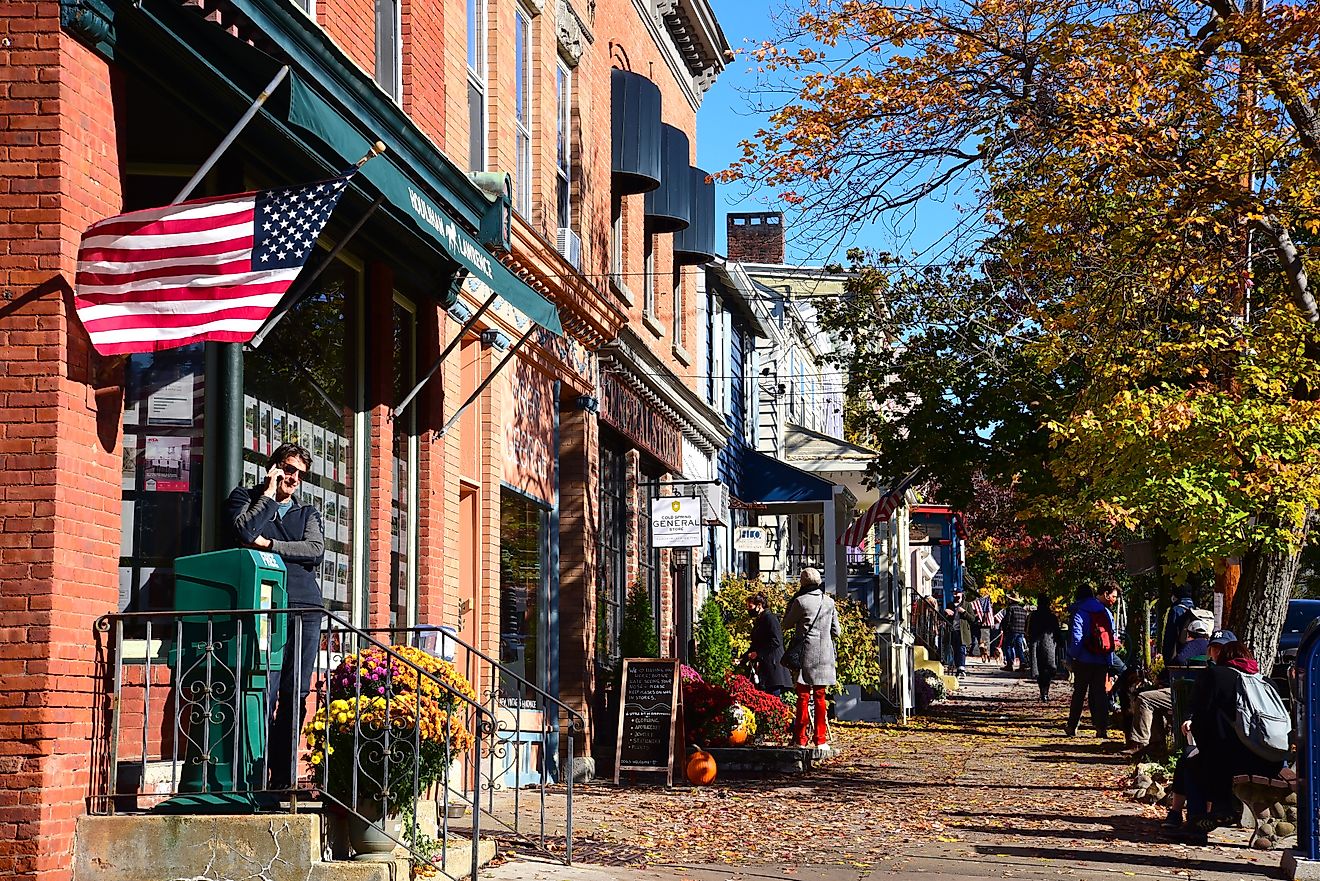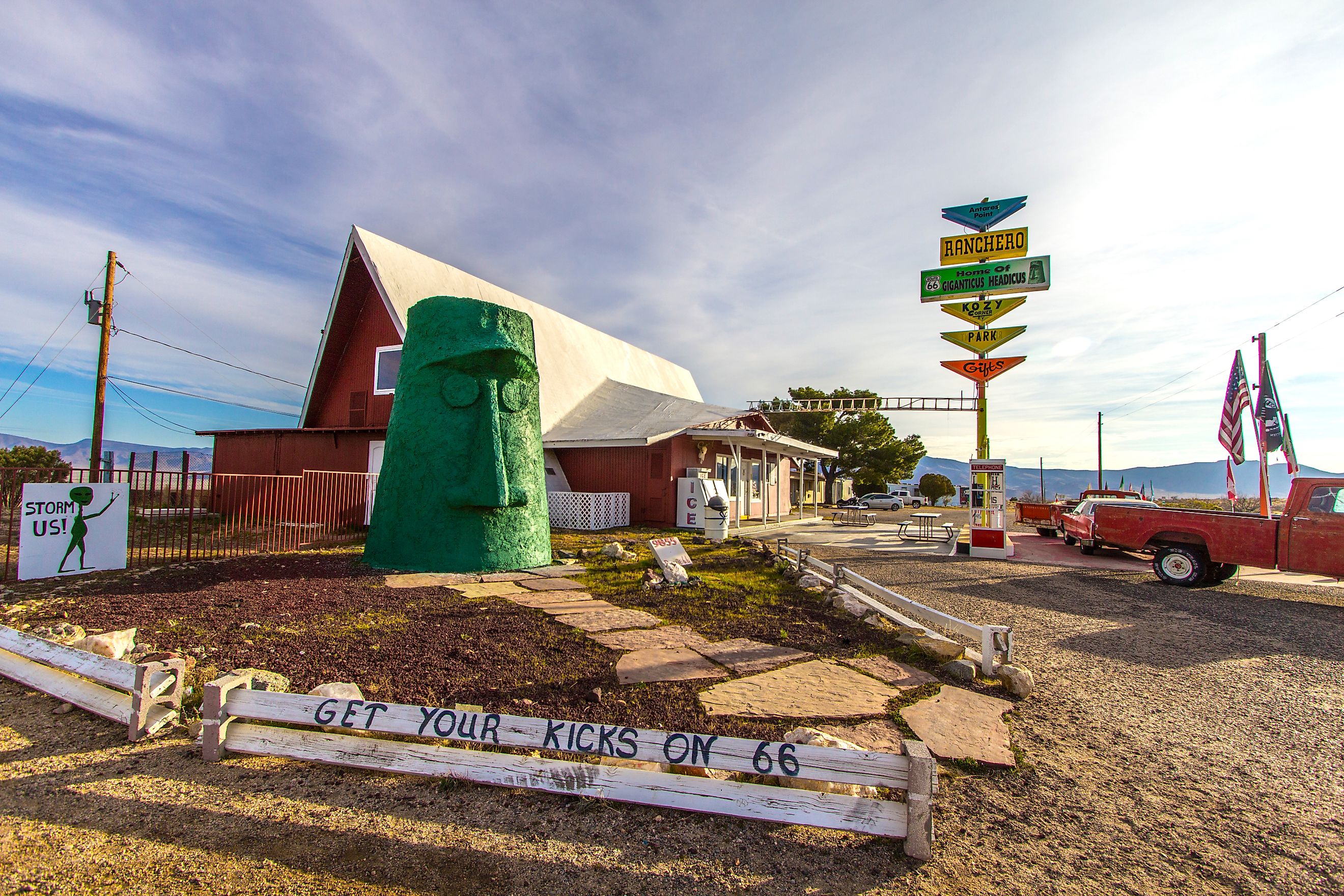
9 Strangest Landmarks In Arizona
With five million people flocking to the Grand Canyon every year, it is easy to see why Arizona's other attractions are often overshadowed. While destinations like Saguaro National Park and downtown Phoenix also shine, Arizona’s smaller landmarks frequently fall out of the spotlight. With that said, some of Arizona’s more strange and overlooked attractions hold some of the most memorable sights and experiences. From quirky roadside installations on Route 66 to rare and mesmerizing geological landscapes, these landmarks provide a refreshing escape from the ordinary, revealing a side of Arizona beyond its famous canyon.
Oatman Burros
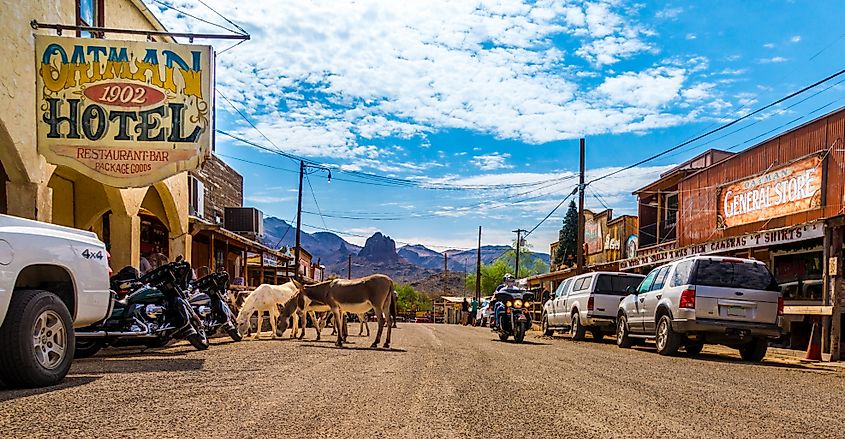
While some think of Oatman as a ghost town, this former mining hub is far from abandoned. Although less than one hundred locals call the town home, the area’s burro population often reaches the thousands. They live in harmony with Oatman residents and are accustomed to visitors dropping by since part of Route 66 runs right through the town. These curious creatures are frequently seen walking through Oatman’s main stretch, poking heads into car windows and engaging with guests. The burros are thought to descend from the donkeys used by gold miners during Oatman’s mining heyday. But these days, their main line of work is soliciting snacks from visitors.
Meteor Crater
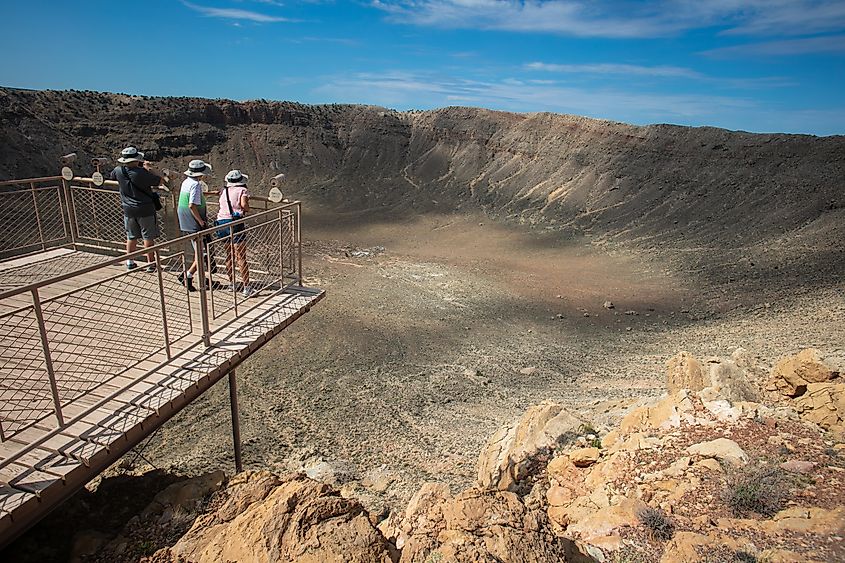
In Arizona’s Canyon Diablo region, you can visit “the world's best-preserved meteorite impact site on Earth.” The massive bowl-shaped crater was discovered in 1891 and it is believed to be 50,000 years old. With a 4,000-foot diameter and 600-foot depth, this mesmerizing landmark has a way of making visitors reflect on the astounding power of the meteor that shaped it. The on-site Meteor Crater Visitor Center is the perfect prelude to your adventure, featuring exhibits, an Interactive Discovery Center, and an indoor crater viewing area. Afterward, a guided tour of the rim will really put the crater’s colossal size into perspective.
Horseshoe Bend
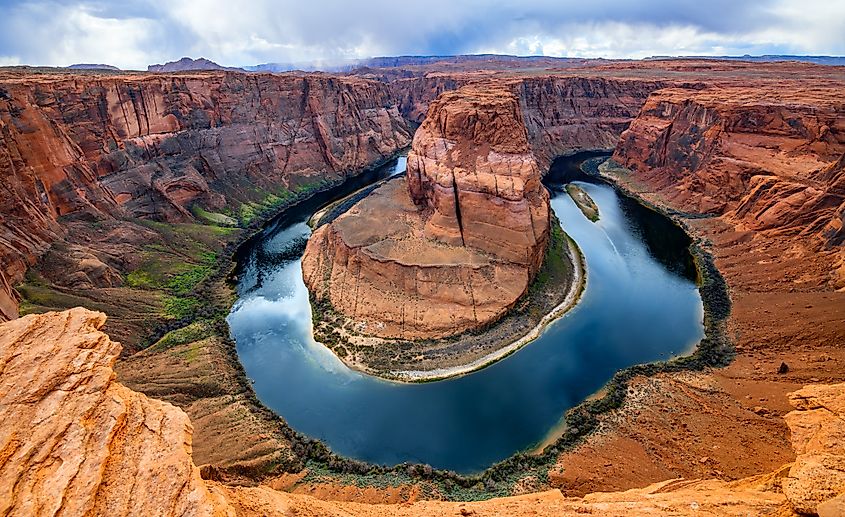
Horseshoe Bend is another mind-blowing geological landform worth adding to your travel itinerary. While not necessarily “strange” in the typical sense, the landform is by all means rare and extraordinary. Its formation began millions of years ago when the Colorado River carved a horseshoe-shaped curve in Glen Canyon. This artistic erosion is now one of the most photographed sites in the country, attracting two million visitors every year. Beyond its reputation as a “social media darling,” this Glen Canyon National Recreation Area phenomenon is a beloved recreation spot. The 1.5-mile Horseshoe Bend Trail is one of the park’s top hikes, offering spectacular vistas. If you are hoping to avoid crowds, try visiting outside of summertime or on a weekday.
The London Bridge
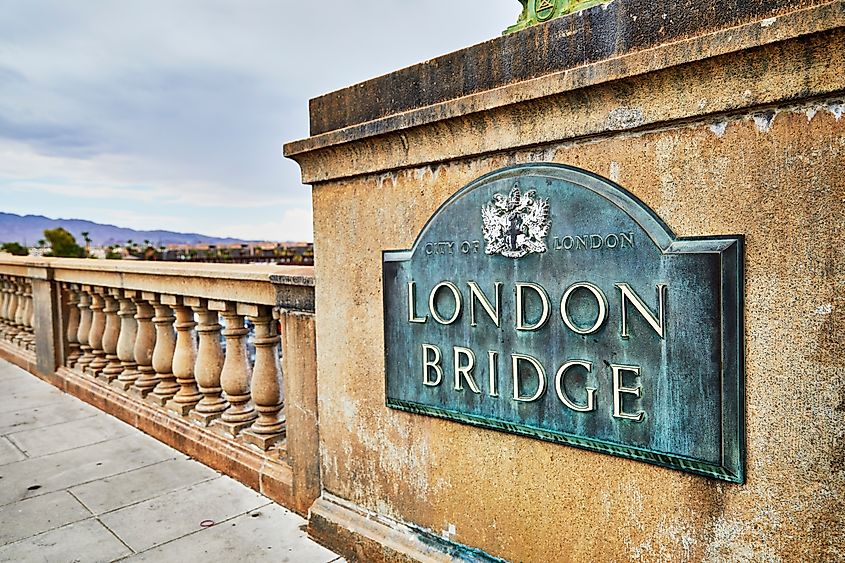
You might have heard the famous English nursery rhyme about the London Bridge growing up. But did you know this very bridge is located right in Arizona? Originally constructed across the River Thames in London, England, between 1176 and 1209, the iconic structure now resides in Lake Havasu City. After needing ongoing repairs in London over several centuries, the bridge was replaced in the early 1800s. The “old” London Bridge was eventually sold and relocated to Arizona in 1968 with the hopes of attracting tourism and influencing city growth. Today, the bridge serves a practical purpose by connecting the city’s mainland to an island in Lake Havasu. However, its original purpose of attracting visitors has also been accomplished tenfold, forever putting Lake Havasu City on the map.
Governor Hunt's Pyramid Tomb
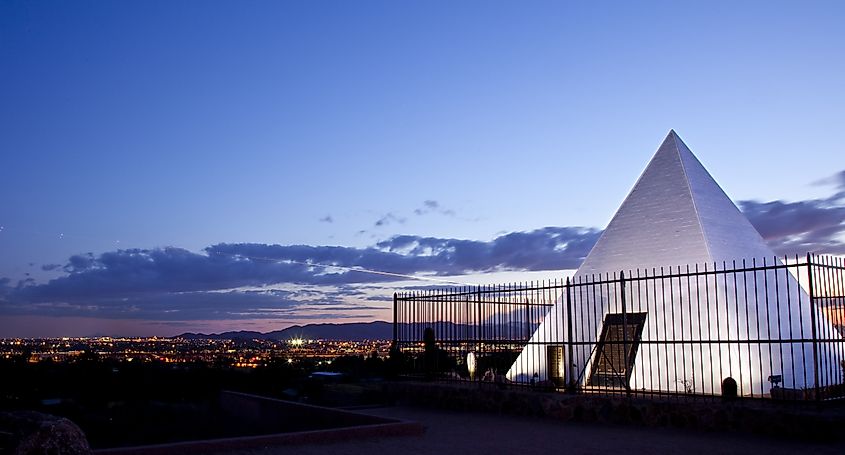
When visiting Arizona’s spirited capital, it can be tricky to decide where to devote your time. But if you are on the hunt for a more unconventional Phoenix attraction, you can find an intriguing landmark near the Phoenix Zoo. On a hill overlooking the zoo's desert animals exhibit, visitors can spot a mysterious white pyramid. This striking structure marks the burial site of George W.P. Hunt, Arizona’s first governor. Hunt is known for serving seven nonconsecutive terms as governor and is remembered as "a colorful pioneer.” As you may have guessed, he was inspired to base his burial site on the Egyptian pyramids he saw during his travels. While certainly strange at first glance, this unique Arizona landmark is worth taking in, whether viewing it from the zoo or taking the tomb trail in Papago Park.
Tovrea Castle
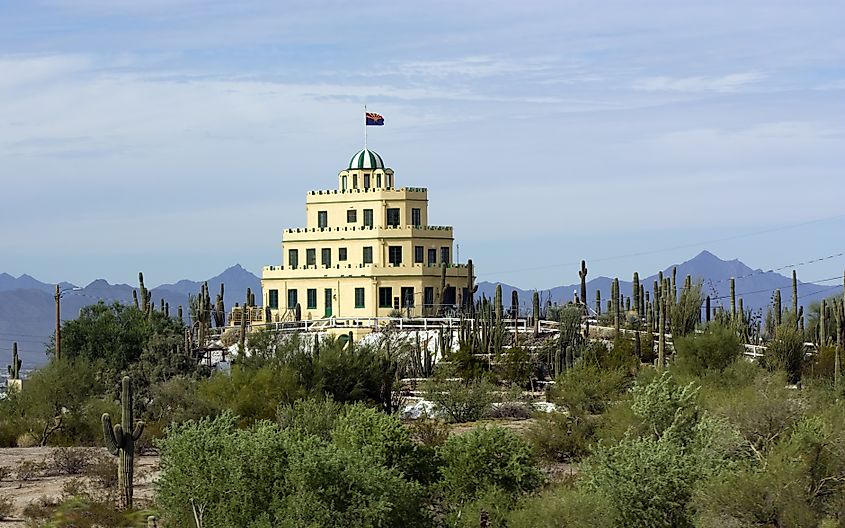
While in Phoenix, make sure to check out other extraordinary landmarks like Tovrea Castle, Arizona’s “Jewel in the Sonoran Desert.” The eye-catching Italianate-style building is often called "Wedding Cake Castle” due to its four-story, cake-tier appearance. It was constructed from 1928 to 1930 by Alessio Carraro, an Italian immigrant with dreams of transforming the area into a desert resort. While these dreams were never actualized and the castle later became a residence, the historic structure eventually opened to the public in 2012. These days, tours of the castle and surrounding Cactus Gardens are incredibly popular, with tickets selling out months in advance.
The Chapel Of The Holy Cross

About two hours north of Phoenix, the desert town of Sedona blends culture and nature in a breathtaking way. The Chapel of the Holy Cross is the town’s top cultural site, set apart by its setting and design. Voted one of “The Ten Most Beautiful Churches Around the World” by Architectural Digest, the chapel was built directly into the area’s red cliffs. The church itself is extremely impressive but views from its observation area are even better, overlooking the Verde Valley. While steep, a 0.1-mile path to the lookout offers the quickest gateway to the church. Alternatively, the 1.3-mile out-and-back Chapel Trail lengthens your journey but extends your views of the surrounding buttes.
Giganticus Headicus
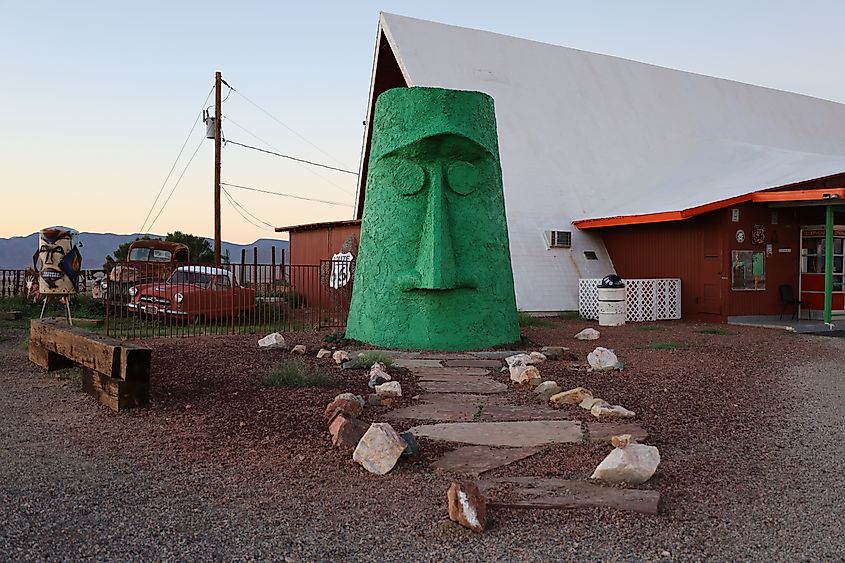
Back on Route 66 in the town of Kingman, travelers and road-trippers can find unique roadside attractions like Giganticus Headicus. As the name implies, Giganticus Headicus is a large statue of a head, similar to the figures of Easter Island. The green 14-foot Tiki-style sculpture was made in 2004 by artist Gregg Arnold, who constructed the statue out of styrofoam, cement, and chicken wire. While here, visitors can snap a photo next to the quirky sculpture, enjoy other installments by Arnold, and browse the old gas station for souvenirs. While most only spend a short time with Giganticus Headicus, very few regret making the stop.
Pumpkin Spring
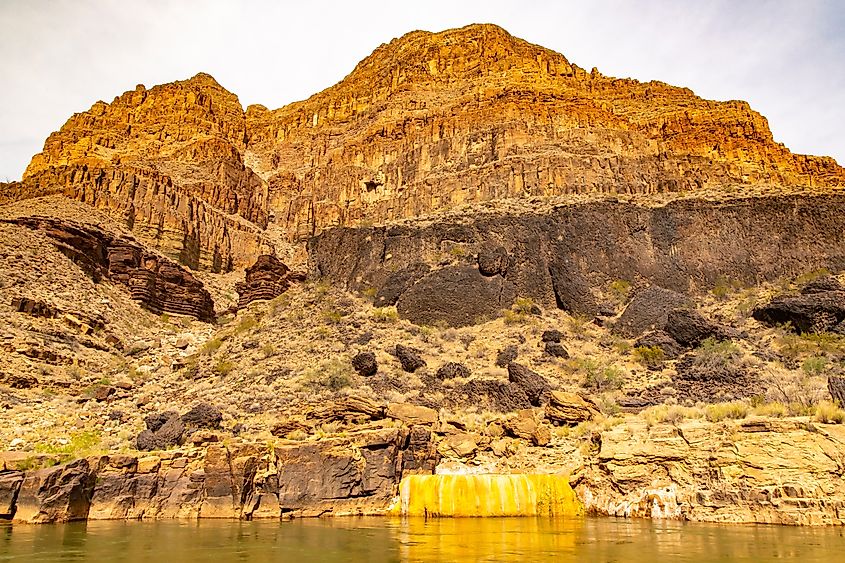
If you are looking to explore some of the Grand Canyon’s hidden nooks, Pumpkin Spring is one of its best-kept secrets. Since the geothermal mineral spring can only be discovered by paddling the Colorado River, you can enjoy this special landmark without large crowds. As its name implies, the spring looks like a pumpkin, from its rounded shape to its orange hue. But be warned: while the hot spring waters may seem inviting, they are strictly meant for viewing only. This is because the water is laced with zinc, copper, lead, and unsafe amounts of arsenic. Be sure to take a picture and appreciate the scenes, but leave it at that before continuing your unconventional Grand Canyon journey.
Final Thoughts
When it comes to Arizona's top attractions, the Grand Canyon will always take center stage. However, that does not mean the state's smaller attractions cannot be enjoyed as well. Whether devoting an entire trip to these unique sites or visiting them as a detour, these landmarks and experiences will be the most memorable part of your trip. From meteor craters to giant tiki statues, Arizona offers a strange but exciting world beyond its canyon.



